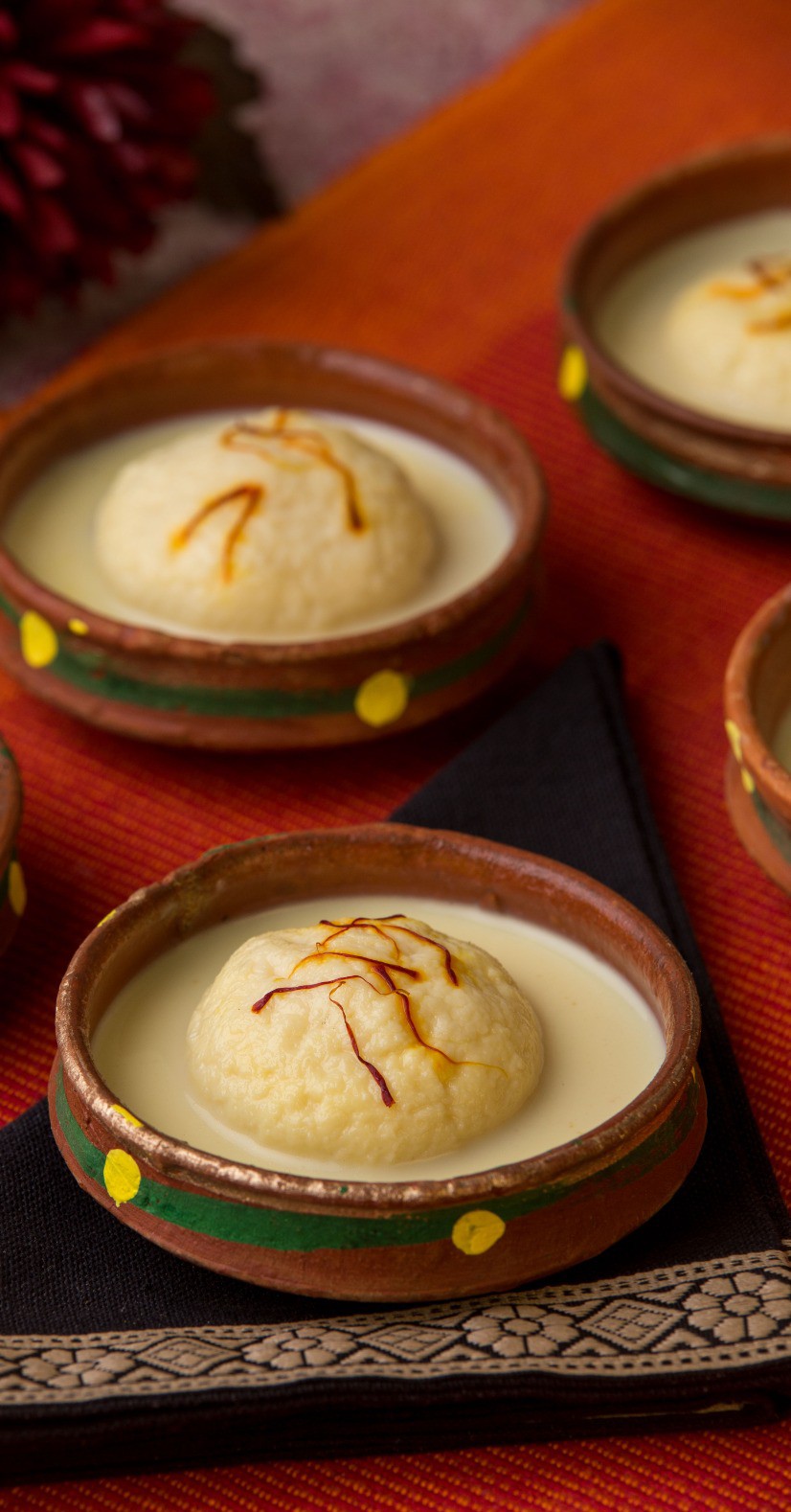It is everyone’s favourite. From superstar Shahrukh Khan to Sunita Williams the astronaut. If you have attended elite destination weddings lately, you cannot miss the fact that the Indian super-rich love this dessert more than probably any other. There is something really special about the Rasmalai. This soft, spongy cottage cheese dumpling soaked in a creamy, sweetened milk sauce, flavoured with cardamom, saffron, and rose water, is not just a favourite in India, but rules the roost in Bangladesh and among the worldwide Indian Diaspora. The delicate texture and the smoothness of creamy flavour mark it as a distinct offering.
The trick of a great Rasmalai is in its subtlety; it cannot be either overly sweet or spongy. It has to be bitten into, but as soon as you bite it, it has to melt right away! A perfect balance of sweetness and richness that is not easy to achieve, especially given that the texture that holds it all together has to be the perfect velvet. It is a light dessert, unlike most Indian sweets that are overloaded and heavy. Dhiman Das, proprietor of K.C. Das, the legendary, nearly 100-year-old sweetshop in Calcutta, elaborates, “The special aspect about the Rasmalai is the softness of the chhena. This takes a delicate touch and patience. The subtle fragrance of saffron adds that special aroma. The syrup or the milk in which the chhena balls are dipped should be very light and consistent. The chhena should be very smoothly kneaded without any grains at all.” The Rasmalai is mentioned in the famous Sanskrit text that was a compilation of recipes and ayurveda, the “Bhavaprakasha”, in the early 1500s. In particular, the text describes a sweet dish made with soft cottage cheese, added milk laced with sugar, and saffron embellishments, which is what a Rasmalai is!
While making cottage cheese is an ancient Indian enterprise, with spongy paneer being a part of the Indian food culture for a very long time, the arrival of the Portuguese to Goa and Hoogly and their own cheese-making tactics in the early 1600s made the sweet dish in a different hue. The Portuguese variety with a thinner version of the cottage cheese, the key ingredient of the Rasmalai, probably took its popularity pan India. Rasmalai was also a regular part of the winter menu of the later Mughals. Indeed, there are foreign sources like the visitors from the Dutch East India Company that mention Rasmalai as being offered in the court of Shahjahan at Delhi, as well as his son, Shah Shuja, the governor of Bengal. Besides K.C. Das, Rasmalai at its best is available in Delhi at the famous Brijwasi store in Delhi University. Originally priests from Mathura, their more than 60-year-old shop is a must visit. When in Bombay, the place for a classic Rasmalai is in Powai at the Sweet Bengal shop. They have traditional halwai who churns out great stuff. In Dhaka, the Banoful and Company is probably the best place to visit and is reported to be patronised by the Indian high commission.
So, next time you enjoy this saffron-powdered sweet, relish its long history, and maybe order seconds!
The delicate perfection of a Rasmalai
- Advertisement -

